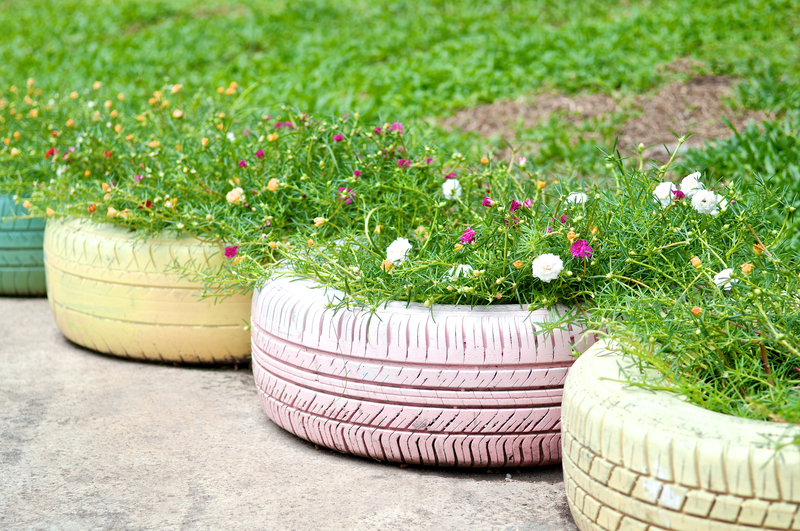Household Practices to Cut Hazardous Waste
Posted on 29/10/2024
Hazardous waste is a growing concern for many households as it poses serious environmental and health threats. While industries and governments are taking significant steps to manage and reduce hazardous waste, individual households also play a pivotal role. Implementing some key practices at a household level can significantly cut down on hazardous waste. This article explores effective household practices to cut hazardous waste, offering comprehensive strategies that anyone can implement.
Understanding Hazardous Waste
Hazardous waste refers to waste that can be dangerous or harmful to human health and the environment. It includes items such as batteries, paint, pesticides, electronics, and cleaning products. When disposed of improperly, these materials can contaminate soil, water, and air, leading to severe health risks and ecosystem damage.

Identifying Hazardous Waste in Your Home
Before exploring ways to reduce hazardous waste, it's essential to identify what qualifies as hazardous waste in your home. Common household items include:
1. Batteries: Alkaline, lithium, and rechargeable batteries.
2. Electronics: Old computers, cell phones, and televisions.
3. Paints and Solvents: Oil-based paints, thinners, and varnishes.
4. Cleaning Products: Bleach, ammonia, and certain detergents.
5. Pesticides and Herbicides: Weed killers, insecticides, and rodenticides.
6. Automotive Fluids: Motor oil, coolant, and transmission fluids.
Understanding what constitutes hazardous waste is the first step in mitigating its impact on the environment and health.
Efficient Use and Purchase of Products
One of the most effective ways to reduce hazardous waste is by being mindful of product usage and purchasing decisions. Here are some practices to consider:
Buy Only What You Need
Over-purchasing products can lead to excess that ultimately becomes waste. For example, buying large quantities of paint or cleaning agents that you will not use can result in disposal issues down the line. Purchase only the amount you need for a particular task.
Choose Less Hazardous Alternatives
Opt for products labeled as environmentally friendly or those containing fewer hazardous ingredients. For instance, choose water-based paints over oil-based ones or natural cleaning products instead of those with harmful chemicals.
Proper Storage
Store hazardous materials in their original containers with labels intact. Proper storage reduces the risk of spills, leaks, and accidental mixing of incompatible substances, which can result in hazardous reactions.
Safe Disposal of Hazardous Waste
Disposing of hazardous waste safely and responsibly is critical to minimizing environmental impact.
Local Hazardous Waste Programs
Many communities offer hazardous waste collection programs. These programs safely dispose of items like batteries, electronics, and chemicals. Check with your local waste management authority for dates and guidelines.
Recycling
Recycling is not just for cans and paper. Many hazardous waste items, such as batteries and electronics, have specialized recycling programs. Some retailers even offer take-back programs for old electronics and batteries.
Neutralization
Certain household products can be neutralized before disposal. For example, mixing equal parts of baking soda and vinegar can neutralize some mild acids and bases, making them safer to dispose of down the drain.
Reuse and Repurpose
Another effective way to cut hazardous waste is by reusing and repurposing items whenever possible.
Second-hand Stores and Donation Centers
Items like paint, cleaners, and electronics can often be taken to second-hand stores or donation centers. These organizations can put unused products to good use, reducing waste.
Creative Repurposing
Get creative and find new uses for old items. For instance, old paint can be used for art projects or community murals. Outdated electronics can be used for educational purposes or DIY repairs.
Effective Cleaning Practices
Cleaning products are a significant source of hazardous waste. Adopting environmentally-friendly cleaning practices can make a big difference.
DIY Cleaning Products
Many household cleaning tasks can be accomplished with simple, non-toxic ingredients like vinegar, baking soda, and lemon juice. Creating your own cleaning products reduces reliance on commercial products containing hazardous chemicals.
Minimize Usage
Use cleaning products sparingly and only when necessary. Overuse not only leads to more waste but can also create toxic fumes and residues in your home.
Proper Maintenance of Household Items
Properly maintaining household items can extend their life and reduce the need for hazardous replacements.
Regular Maintenance
Items like appliances and electronics should be regularly cleaned and maintained to extend their lifespan. Proper maintenance can prevent the accumulation of hazardous materials and reduce the frequency of disposal.
Timely Repairs
Repair faulty items instead of replacing them. Many electronics and appliances can be repaired, reducing the need to dispose of hazardous components.
Avoiding Single-Use Items
Single-use items often contain hazardous materials and contribute to waste. Avoiding these items can significantly reduce your household's hazardous waste footprint.
Reusable Options
Use rechargeable batteries instead of single-use ones, and invest in products designed for long-term use. Stainless steel water bottles, reusable shopping bags, and cloth napkins are excellent alternatives to their single-use counterparts.
Bulk Purchases
Buying in bulk can reduce packaging waste and minimize the quantities of hazardous materials you need to dispose of. Opt for larger containers of environmentally friendly cleaning products and transfer them to smaller, reusable containers as needed.

Educating Yourself and Others
Staying informed about hazardous waste and spreading awareness is crucial for fostering a culture of responsible disposal.
Stay Updated
Keep yourself updated on the latest guidelines and recommendations for hazardous waste disposal in your community. Regulations can change, and staying informed ensures you're adhering to the best practices.
Community Involvement
Participate in local hazardous waste collection events and workshops. Educate friends, family, and neighbors about the importance of reducing hazardous waste and share tips on how to do so effectively.
Conclusion
Reducing hazardous waste at the household level requires a combination of mindful purchasing, proper disposal, and sustainable practices. By following the steps outlined above, you can make a significant impact on the environment and public health. Remember, every small effort counts, and together, we can create a safer, healthier planet for future generations.



